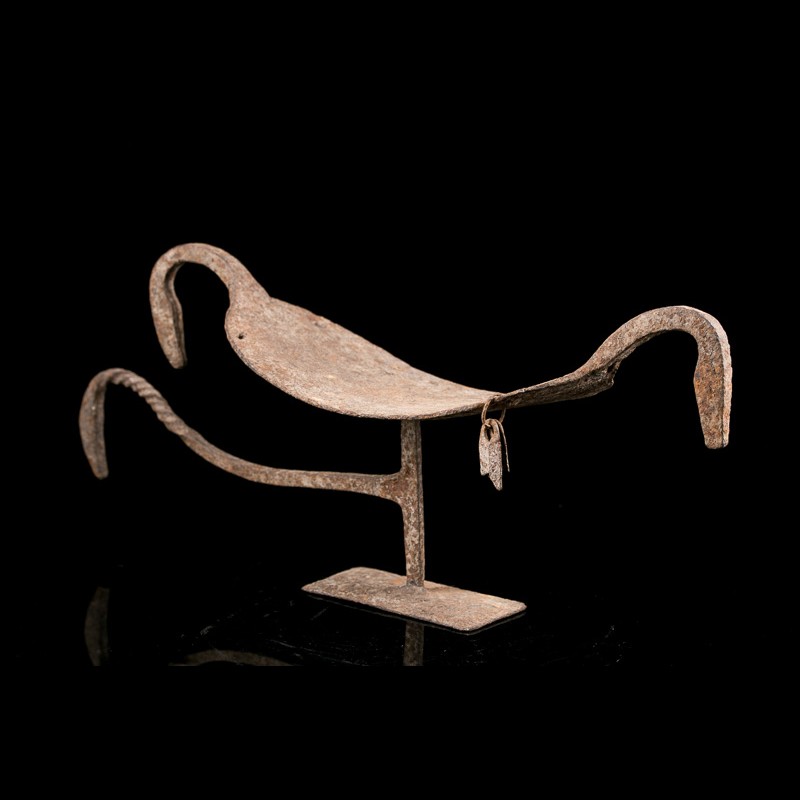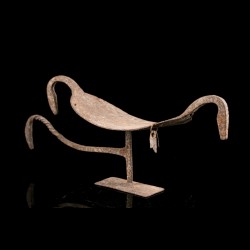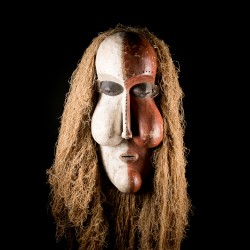








Dogon neck rest featuring a stylised bird, a masterpiece made by an unknown smith. According to information gathered by A. Blandin, the iron birds of the Dogon, called Orotongou, are said to be messengers allowing the Hogon to correspond with each other.
Among the Dogon, the representation of the bird is common, on everyday objects, placed in ancestor altars or at the top of totemic sanctuaries, where they regularly received millet porridge and blood sacrifices. In the 1930s, Dogon irons were still so forbidden that it was unthinkable for their owners to part with them.
Data sheet

Dogon neck rest featuring a stylised bird, a masterpiece made by an unknown smith. According to information gathered by A. Blandin, the iron birds of the Dogon, called Orotongou, are said to be messengers allowing the Hogon to correspond with each other.
Among the Dogon, the representation of the bird is common, on everyday objects, placed in ancestor altars or at the top of totemic sanctuaries, where they regularly received millet porridge and blood sacrifices. In the 1930s, Dogon irons were still so forbidden that it was unthinkable for their owners to part with them.
